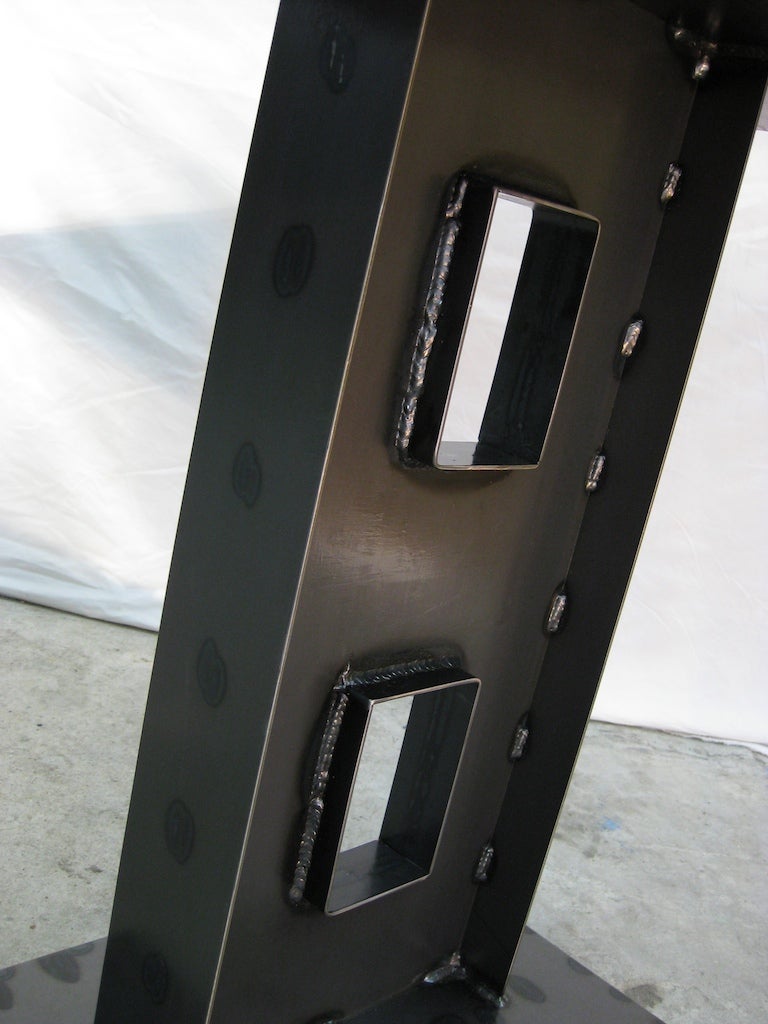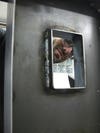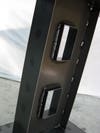Science of DIY: Make Weak Materials Strong with Simple Geometry
How putting holes in a column can actually make it stronger


The I-Beam Table Under Construction
At a basic level, you probably know that building materials are stronger in certain axes than others. While you could learn all about moments of inertia and beam bending, what the average DIY builder really needs is an intuitive sense of the practical ways you can configure whatever you’re building with to make it stronger. Whether you’re building a tank or a table, understanding the forces at work will help make it both light and strong.
Recently, I built a kitchen table for a couple in NYC using thin metal for the main support. Here are a few simple tricks for adding strength without adding much weight.
Technically, we’re talking about the area moment of inertia and resistance to bending. Practically, we’re talking about strength and rigidity. Since most DIY builders are more concerned with building something strong and light than with quantifying resistance to bending, we’ll consider the practical approach and leave the math for another time.
Lets look at a simple example. Picture a 2×4 sitting on top of two sawhorses. (If you’ve never handled a 2×4 before, step away from the computer right now, head to the lumber yard, and try this.) Imagine pushing on the center of that span. Experience tells us that it will be harder to bend the 2×4 when pushing on the narrow side than when pushing on the wide side. Theory tells us that a plane passing through the 2×4 parallel to one of the “4” wide sides contains more material than a plane parallel to one of the “2” sides. At a very basic level, more material means more material to bend, which means a greater resistance to bending—what we call strength.

Little I-Beam Table Closeup
I used this concept twice recently in the steel column of a table I built for a customer. The column is made of 1/8″ thick hot-rolled mild steel. Standing on its own, the 12″ wide x 28″ tall x 1/8″ thick piece that forms the main part of the column would not be very rigid at all. A small amount of force—even just the weight of the tabletop—would cause it to bend and twist. Adding the 4″ wide x 1/8″ thick pieces on either side—essentially turning it into an I-beam—makes the column much more resistant to bending and adds very little weight compared to other ways of building such a rigid column. Even if I stopped here, the table base would have been strong enough to support the weight of the tabletop and several people standing on it.
With this design however, we went even further. In this table, the cutouts are purely for looks. In larger panels though, this style of cutout can significantly increase the local resistance to bending. The concepts at work are exactly the same as above: More material is added in a plane aligned with an otherwise easily bendable axis of the part. It is important to note that the part as a whole does not need to be made thicker to gain most of this strength – adding the material in just one or in a few places can give significant results.
This concept is found in most sheet metal parts that include large flat spans. Beads or flared holes in the sheet metal add material in planes that are aligned with an axis in which the part would otherwise be weak. That is, they essentially allow a thin part to behave like a thicker part without adding much weight. Where material is removed, as in the case of cutouts as above, or flared holes in sheet metal, weight can actually be reduced.
This concept is not specific to steel; it applies equally well to all materials. Consciously applying it to design decisions will yield significantly lighter and stronger results.

Little I-Beam Table